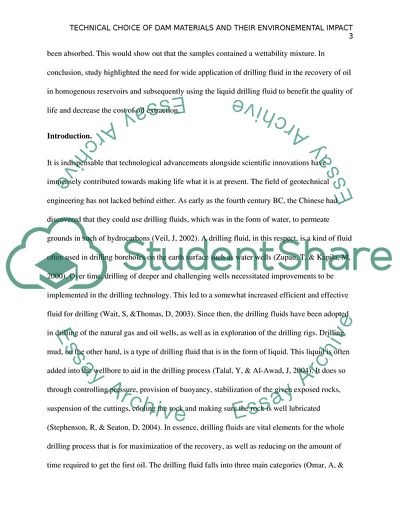Cite this document
(Technical Choice of Dam Materials and Their Environmental Impacts Research Proposal Example | Topics and Well Written Essays - 4000 words - 1, n.d.)
Technical Choice of Dam Materials and Their Environmental Impacts Research Proposal Example | Topics and Well Written Essays - 4000 words - 1. https://studentshare.org/engineering-and-construction/1790358-technical-choice-of-dam-materials-and-their-environmental-impacts
Technical Choice of Dam Materials and Their Environmental Impacts Research Proposal Example | Topics and Well Written Essays - 4000 words - 1. https://studentshare.org/engineering-and-construction/1790358-technical-choice-of-dam-materials-and-their-environmental-impacts
(Technical Choice of Dam Materials and Their Environmental Impacts Research Proposal Example | Topics and Well Written Essays - 4000 Words - 1)
Technical Choice of Dam Materials and Their Environmental Impacts Research Proposal Example | Topics and Well Written Essays - 4000 Words - 1. https://studentshare.org/engineering-and-construction/1790358-technical-choice-of-dam-materials-and-their-environmental-impacts.
Technical Choice of Dam Materials and Their Environmental Impacts Research Proposal Example | Topics and Well Written Essays - 4000 Words - 1. https://studentshare.org/engineering-and-construction/1790358-technical-choice-of-dam-materials-and-their-environmental-impacts.
“Technical Choice of Dam Materials and Their Environmental Impacts Research Proposal Example | Topics and Well Written Essays - 4000 Words - 1”. https://studentshare.org/engineering-and-construction/1790358-technical-choice-of-dam-materials-and-their-environmental-impacts.


